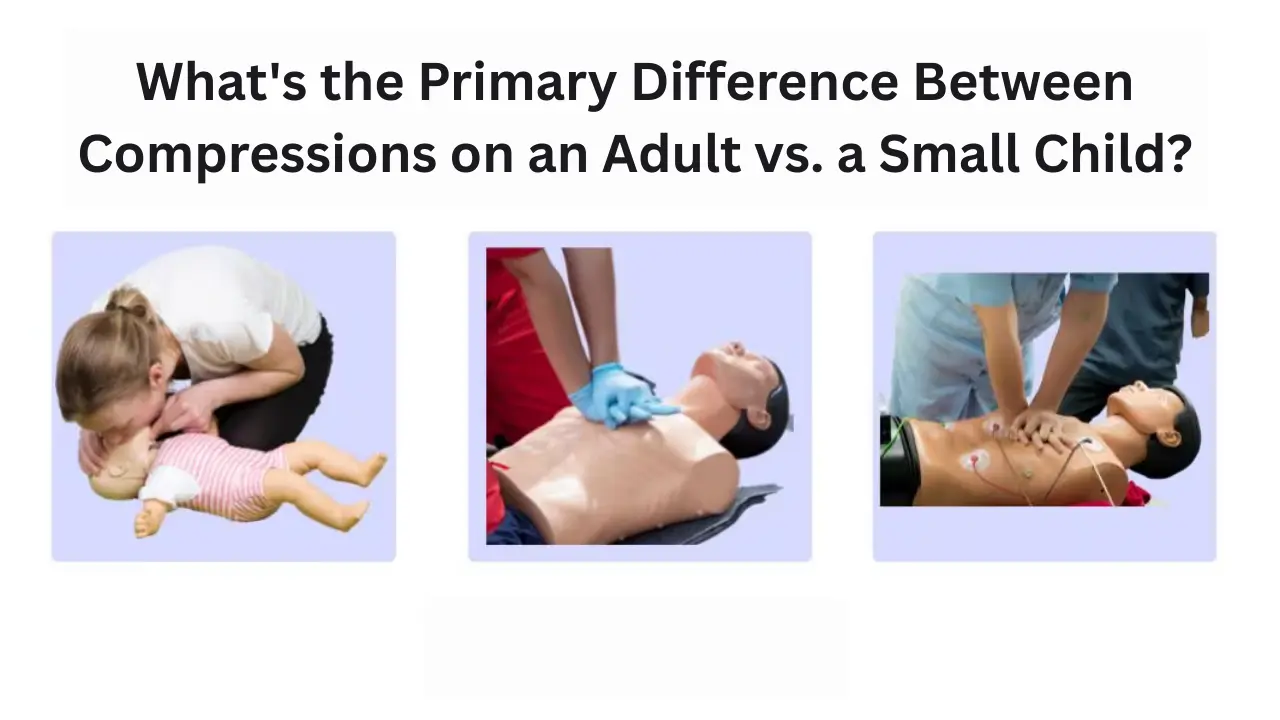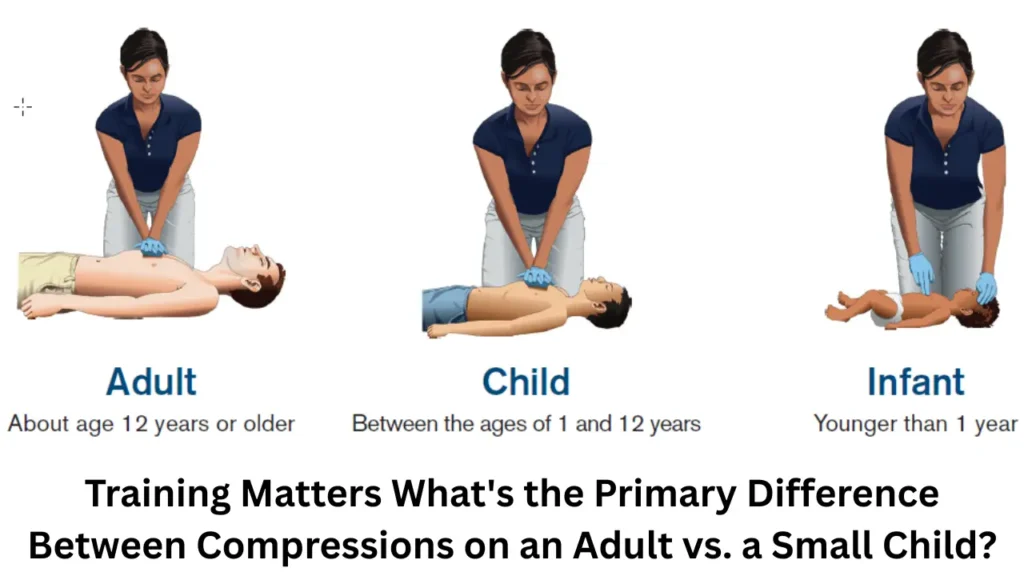What’s the Primary Difference Between Compressions on an Adult vs. a Small Child?

If you’ve ever wondered what’s the primary difference between compressions on an adult vs. a small child?, you are not alone. This question often comes up during CPR training. Knowing the difference can help save lives. CPR compressions help pump blood through a person’s body when their heart stops.
What is CPR Basics?
Before exploring what’s the primary difference between compressions on an adult vs. a small child?, let’s first understand CPR. CPR means Cardio Pulmonary Resuscitation. It is a method to help a person’s heart beat again. When someone stops breathing or their heart stops beating, CPR gives them a chance to survive until professional help arrives. CPR has two main parts: chest compressions and rescue breaths. Chest compressions keep the blood flowing. Rescue breaths put oxygen into the person’s lungs.
Chest Compressions
Now, let’s answer clearly what’s the primary difference between compressions on an adult vs. a small child? The biggest difference is how deep you press. For adults, press at least 2 inches deep. For small children, press only about one-third of the chest’s depth, around 2 inches as well. But because children are smaller, one-third depth usually means less force.
Hand Placement for Adults
When giving CPR to an adult, put your two hands in the center of their chest. The lower half of the breastbone is the right spot. Press down hard, keeping your arms straight. This technique helps push blood through their body effectively. Using your whole upper body strength helps deliver enough force. Adults need strong compressions because their hearts are bigger and tougher. Remember, correct placement and depth are vital for adults.
Hand Placement for Small Children
What’s the primary difference between compressions on an adult vs. a small child? in terms of hand placement? With small children, usually one hand is enough. Place your hand on the lower half of their breastbone. Press down gently but firmly. If the child is slightly bigger, you might need two hands. But be careful not to press as hard as you would for an adult. Small children’s bones are fragile, and too much pressure can cause injury.
Compression Speed
One thing that stays the same, even if you ask what’s the primary difference between compressions on an adult vs. a small child?, is the speed of compressions. For both adults and small children, you should do about 100 to 120 compressions per minute. This speed helps blood flow consistently. A useful trick is humming the song “Stayin’ Alive” while doing compressions. This helps keep the right pace, helping the person until medical help arrives.
Compression to Breath Ratio
Another similarity when considering what’s the primary difference between compressions on an adult vs. a small child?, is the ratio of compressions to rescue breaths. For both adults and small children, the ratio is usually 30 compressions followed by 2 breaths if you are alone. If there are two rescuers helping a small child, the ratio changes to 15 compressions and 2 breaths. This allows rescuers to give more oxygen, helping small children who often have breathing problems.
Risks of Incorrect Compressions
Knowing what’s the primary difference between compressions on an adult vs. a small child? is crucial because incorrect compressions can be harmful. Pressing too lightly means the heart might not restart. Pressing too hard, especially on a small child, could break ribs or injure organs. Always adjust your pressure according to the person’s size. Be gentle but firm with small children. With adults, be strong enough to push blood effectively.
Quick Reference
To make it clear, here’s a helpful table summarizing what’s the primary difference between compressions on an adult vs. a small child?:
| Feature | Adult CPR | Small Child CPR |
|---|---|---|
| Compression Depth | At least 2 inches | About 2 inches (one-third depth) |
| Hand Use | Two hands | Usually one hand |
| Compression Speed | 100-120 per minute | 100-120 per minute |
| Compression-Breath Ratio | 30 compressions : 2 breaths | 30:2 (single rescuer), 15:2 (two rescuers) |
Special Considerations
When performing CPR, also consider the situation around you. Is the area safe? Can you call emergency services quickly? Being calm and clear-headed helps you remember what’s the primary difference between compressions on an adult vs. a small child? clearly. Always ensure help is on the way. CPR keeps someone alive temporarily. Medical professionals are needed to fully revive a person.
Training Matters

The best way to clearly understand what’s the primary difference between compressions on an adult vs. a small child? is by taking a CPR class. These classes teach you hands-on skills and help you practice with experts. CPR training helps you remember these steps during an emergency. It also teaches you the right ways to give rescue breaths, how to check for responses, and ways to stay safe.
Why Knowing CPR is Important
Knowing what’s the primary difference between compressions on an adult vs. a small child? can help you save lives. Emergencies can happen anywhere. The quicker you respond, the better chances someone has to survive. Understanding CPR techniques clearly helps you stay calm. It empowers you to act confidently when someone needs help. Remember, effective CPR doubles or triples survival chances.
Frequently Asked Questions
Can I use two hands for compressions on a small child?
Yes, but only if the child is larger and you need more force. Usually, one hand is enough for small children.
Is the compression rate the same for adults and children?
Yes, both require 100 to 120 compressions per minute to keep the blood flowing properly.
What happens if I press too hard on a child?
Pressing too hard can injure their ribs or organs, so be firm but gentle.
Do I always need to give rescue breaths?
Rescue breaths are ideal, but if you can’t give them, hands-only CPR is better than doing nothing.
Conclusion
In summary, what’s the primary difference between compressions on an adult vs. a small child? is primarily about how deeply you compress and how much force you apply. Both require the same rate and similar ratios for breaths. By learning these important differences, you can confidently help others during an emergency. Every second counts. Knowing CPR is truly life-saving.




